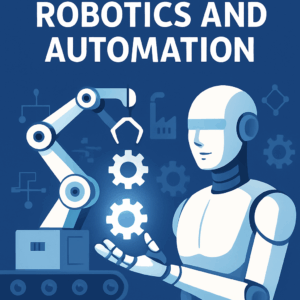
Artificial Intelligence (AI)
Programs which can mimic human capabilities by analyzing and contextualizing data to provide information or automatically trigger actions without human interference.
Automated Storage and Retrieval System (ASRS or AS/RS)
A mechanical system which automatically picks and places goods into requisite storage areas.
Automated Guided Vehicle (AGV)
Different from an AMR, these follow lines, markings, or wires on the floor of an area. Unlike an AMR, they cannot move around obstacles automatically.
Automated Mobile Robot (AMR)
Robots which move through an environment independently, using sensors, cameras or pre-defined paths to navigate an area.
Cobot or co-bot (Collaborative Robot)
A type of robot which is designed for direct human-robot interaction and to assist human colleagues. For example, a picking robot in a warehouse, or a service robot in a restaurant.
Computer Vision
A field of computer science that focuses on enabling computers to identify and understand objects and people in images and videos. It seeks to perform and automate tasks that replicate human capabilities.
Deep Learning
A subcategory of machine learning which uses hundreds or thousands of layered neural networks to simulate the decision-making ability of a human brain and train ML and AI models.
Degrees of Freedom
The number of independent movements a robotics arm can make. The more degrees of freedom, the more flexible and dexterous the arm.
Digital Twin
An identical virtual representation of a physical object.
End effector
A device at the end of a robotic arm, designed to interact with the environment.
Enterprise Resource Planning (ERP)
Software which controls all of the components of a business.
Gripper
A mechanical or robotic device designed to grasp, hold, manipulate, or transport objects.
Hardware
Physical tools, machinery and other durable equipment that go into making a robot, e.g. robot arm or end effector.
Human-Machine Interface (HMI)
A dashboard or screen which connects a human operator to a machine, system, or device and gives them control over it.
Industry 4.0
The use of connected, smart, and automated technologies integrated into a manufacturing chain.
Internet of Things (IoT)
A network of connected technologies.
Light-Emitting Diode (LED)
A device which produces light when powered.
Machine Builder
A machine typically builds machinery and equipment in a manufacturing, industrial, or processing facility.
Machine Learning (ML)
A subcategory of AI which uses algorithms to automatically learn and recognize patterns from data and uses that capability to make increasingly ‘better’ decisions and improve accuracy.
Manipulator
A device or machine used to handle materials without manual operator input.
Neural Network
A machine learning program which makes decisions and simulates a human brain by identifying events, weighing up options, and arriving at conclusions.
Original Equipment Manufacturer (OEM)
Builds robots and machinery which distributors or other parts manufacturers then sell, or adapt into a new solution, e.g. an off-the-shelf robot arm, made by an OEM, could be bought by a company who then add a new attachment to it and re-sell it.
Radio Frequency Identification (RFID)
A form of wireless technology which uses radio frequencies to identify people and objects.
Robot
A programable machine, typically control by a computer, that can perform a task or application automatically.
Software
The programs, coding, and other operating information used by a computer to control or program a robot.
System(s) Integrator
Bring together various hardware, software and other sub-systems to provide a turnkey solution for a customer. Services can include integration and installation.
Warehouse Management System (WMS)
Software which controls and optimizes the aspects of a warehouse, including stock management, picking, packing, and tracking.

